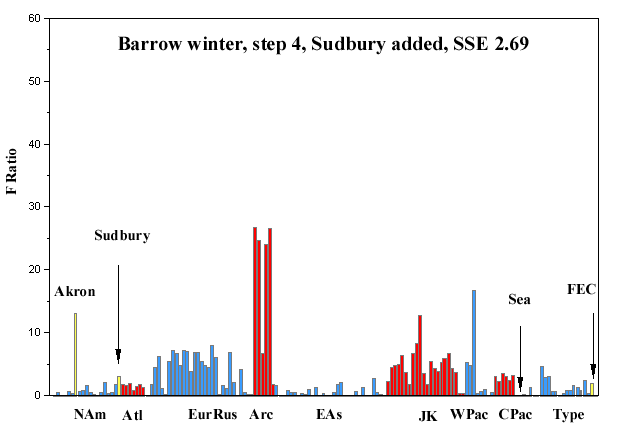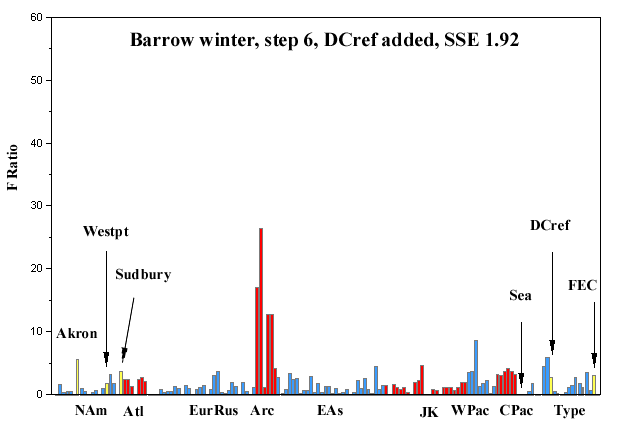
North American solution for Barrow winter
The North American solution for Barrow winter is shown below in red italic. It fails handily, and confirms our long-held conclusions that North American is not a major sources of Arctic haze, at least at the surface.
| Barrow, Alaska, winter | |||||
|
22 elements |
19 elements |
||||
|
Arctic solution |
European solution |
Arctic solution |
North American solution |
East Asian solution |
|
| Step 0 | Nothing chosen | Nothing chosen | |||
| Step 2 | Sea and best crust (FEC) chosen, fit 8.59 | Sea and best crust (FEC) chosen, fit 7.64 | |||
| Step 3 | Norway added, fit 2.42 | Laptev added, fit 0.94 | Norway added, fit 1.18 | Akron added, fit 3.26 | Ube added, fit 2.98 |
| Step 4 | North Sea added, fit 0.71 | Bear Island added, fit 0.75 | Sudbury added, fit 2.69 | Seoul added, fit 2.49 | |
| Step 5 | TransEur added, fit 0.69 | Ny-Ålesund added, fit 0.66 | West Point Added, fit 2.34 | Oku winter added, fit 1.80 | |
| Step 6 | DCref added, fit 1.92 | ||||
We begin by repeating the figure for step 2 so as to show the justification for pursuing a North American solution. It is weak, and should give poor results.

Step 3 adds Akron, with the highest of the North American F-ratios. It produces a fit of 3.26, which is still poor.

Step 4 adds the highest remaining NA source, Sudbury. It improves the fit modestly, to 2.69.

Step 5 adds the bet remaining NA source, West Point. The fit improves modestly, to a still-unacceptable 2.34.

Step 6 adds the type-source DCref (refuse incineration), which again improves the fit modestly, to 1.92. The North American thread stops here with a poor fit. Again note the high Arctic F-ratios waiting in the wings.
